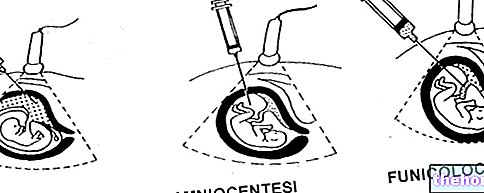Does periodontitis have an impact on quality of life?
By Prof. Filippo Graziani
Health and disease
Being "disease-free" does not necessarily mean being healthy. Historically, the concept of health has been defined by a person's ability to "function" well, without any disease damaging his body. In recent decades, health has been described as "a complete physical, mental and social well-being and not simply the" absence of disease or infirmity ", to grasp its multiple dimensions and its complexity. Since it also extends to socio-cultural aspects health is related to all the different factors that influence personal well-being, so quality of life must also be taken into account when assessing health status.
What is the quality of life?
Quality of life is a person's perception of life at a given moment in terms of ambitions, expectations, concerns and daily life. Put simply, it is the way in which one is able to enjoy life and its many aspects and possibilities.
It is such a subjective concept that it varies from person to person depending on the culture and socio-cultural values. In other words, the concept of quality of life encompasses the dynamics between health and social and contextual values. Health, society, social and emotional life and psychophysical balance have an important impact on it. It can be negatively or positively influenced by a multitude of factors, including physical health, education, work, family , well-being, religious beliefs, the environment, etc.
Contemporary medicine is focusing more and more on quality of life, as evidenced by the increase in medical scientific publications in this field over the past two decades.
Oral health can have a significant impact on quality of life, which can be expressed through a measurement called "Oral health-related quality of life" (OHRQoL). Periodontal inflammatory diseases (ie gingivitis and, in particular, periodontitis) have a well-studied and documented negative impact on OHRQoL.
How do we measure quality of life in relation to oral health and why is it important?
In periodontology, several measurements are used to objectively assess and monitor periodontitis. During each visit, the dentist / periodontist will take measurements around each tooth and check for signs and symptoms of periodontal disease, such as:
Bleeding of the gums
- Alarm bell - usually appears as the first symptom
- It can occur spontaneously, or during brushing or chewing
- Bleeding is less noticeable in smokers
Change in the color of the gums
- Healthy gums are pink, while inflamed gums are red or purplish in color
Swollen gums
- Unlike healthy gums, which have an orange peel appearance, inflamed gums are swollen, easily irritable and can be sensitive to touch.
Gum recessions
- The gums may begin to appear withdrawn in the advanced stages of the disease, when the supporting tissue has been lost.
Bad breath
- The unpleasant odor from the mouth is caused by the same bacteria that cause periodontal inflammation
- Bacteria populate both the periodontal pockets and the tongue
Dental hypersensitivity
- Due to gingival recession, exposed root surfaces may be sensitive to external stimuli (e.g. cold air, food, drink)
Pus
- is a white and / or yellow exudate that forms at the site of inflammation, consisting of dead tissues, cells and bacteria
- It can drain from the periodontal pocket or collect within the periodontal tissue and form an abscess
Dental mobility and migration
- As the disease progresses and the loss of supporting tissues, the teeth can become mobile and even move (a phenomenon called drifting).
Loss of teeth
- Untreated periodontitis leads to tooth loss, due to advanced loss of supporting tissues
Reduced chewing function
- When several teeth are lost, normal chewing is impaired
- The chewing function is also altered by an "excessive mobility of the teeth.
Unsatisfactory aesthetics
- The displacement of the teeth (drifting) and their loss, particularly in the visible frontal areas of the mouth, negatively affects the aesthetic appearance
Given the large amount of signs and symptoms that can be evaluated, the examination will result in hundreds of parameters. These objective measurements, while essential for the periodontist, cannot fully detect how the disease affects a particular person. also evaluate the quality of life of the individual.
The impact that periodontitis has on the quality of life is assessed through psychometric tests (for which there are several questionnaires), which explore its effect on the physical, psychological and social aspects of life. The OHIP-14 (short for Oral Health Impact Profile) is an example of a reliable and accurate questionnaire often used for these assessments. It includes 14 questions, which assess the following 7 areas: functional limitation, physical distress, psychological distress, physical disability, psychological disability, social disability and handicap.

The following are the questions that make up the questionnaire. Questions are answered with never, rarely, sometimes, often or always, depending on how much the person believes they have been dealing with that particular problem:
- Have you had difficulty in speaking words due to problems with your teeth or mouth?
- Have you noticed a worsening of your sense of taste due to problems with your teeth or mouth?
- Did you experience pain in your mouth?
- Have you felt uncomfortable eating food due to tooth or mouth problems?
- Have you ever felt like you have a problem with your teeth or mouth?
- Have you felt tense about having problems with your teeth or mouth?
- Has your diet been unsatisfactory due to problems with your teeth or mouth?
- Did you have to interrupt meals due to dental or mouth problems?
- Have you had difficulty relaxing due to dental or mouth problems?
- Have you been embarrassed by having problems with your teeth or mouth?
- Have you felt a little irritable around other people because of dental or mouth problems?
- Have you had difficulty carrying out your normal activities due to problems with your teeth or mouth?
- Did you feel that your life was less satisfying due to having problems with your teeth or mouth?
- Have you been totally unable to work normally due to dental or mouth problems?
Questionnaires are administered before and after treatment, to understand if and to what extent a change has occurred following treatment.
Oral health-related quality of life assessments are commonly used in research, but not in daily practice. However, thanks to research data, dental professionals have important insights into the impact that a particular condition and types of treatment have on their patients' quality of life. This knowledge guides them in their daily clinical decisions.
How does periodontitis affect quality of life?
Periodontitis, which is an inflammatory disease of the tooth's supporting tissues, has a well documented negative impact on OHRQoL. In particular, the more advanced the periodontitis, the greater the impact on OHRQoL.
Three key aspects of periodontitis, interconnected with each other, cause this impairment.
- SYMPTOMS:
Periodontitis is characterized by numerous symptoms, even very annoying, such as halitosis, bleeding, recession of the gums, mobility of the teeth, etc. These symptoms can affect all spheres of a person's life (physical, social and psychological), affecting their productivity, comfort, appearance and self-confidence. - ALTERATION OF FUNCTIONS:
Severe forms of periodontitis are characterized by increased mobility and tooth loss, which can lead to speech problems and chewing difficulties. Chewing problems, in particular, are a major concern, as they predispose the person to an unhealthy diet with low nutritional intake. Tooth loss can also lead to "incorrect occlusion (bite), overloading of the temporomandibular joint and resulting pain." All of these aspects can affect a person's ability to perform and enjoy daily activities, such as eating and interacting with other people. - PSYCHO-SOCIAL ASPECTS:
People with periodontitis can often feel embarrassed and insecure, to the point of compromising their personal relationships.Many may be reluctant to socialize for fear of being judged due to bad breath, receding gums or an inability to chew properly. Gum recession and tooth loss in the anterior area of the mouth can also affect a person's aesthetics and how they present themselves to others.
Can periodontal therapy restore the previously reduced quality of life due to periodontitis?
Treatment of periodontitis has multiple beneficial effects: it improves periodontal health parameters, positively affects systemic health, and has also been linked to improved quality of life related to oral health. This is likely due to the improvement of the key aspects of periodontal disease previously mentioned. Periodontal treatment leads to a reduction of symptoms (eg reduction of bleeding or absence of halitosis), improvement of functionality (eg greater comfort during chewing thanks to the decrease in the mobility of the teeth) and reduction of the impact on psycho -social (eg feeling less embarrassed) The greatest benefits are seen already after non-surgical causal treatment, which is the first step in periodontal therapy.
The data collected by the research shows a very important fact, both for doctors and for patients: the improvement of the quality of life occurs regardless of the type of instruments that are used in the treatment (ie "traditional" instruments, manual and mechanical, or laser) or the way the treatment is performed (i.e. in several visits to the periodontist or in just two visits). Therefore, to observe a concrete improvement in the quality of life, it is necessary to receive adequate treatment regardless of the technique and instrumentation.
This once again highlights the ability of periodontal treatment not only to keep the disease under control, but also to improve the way a person enjoys their life.
Further reading:
Graziani, F., Music, L., Bozic, D., & Tsakos, G.. Is periodontitis and its treatment capable of changing the quality of life of a patient? British Dental Journal, 227, 621–625. https://doi.org/10.1038/s41415-019-0735-3
Graziani, F., & Tsakos, G.. Patient ‐ based outcomes and quality of life. Periodontology 2000, 83, 277–294. https://doi.org/10.1111/prd.12305
Hujoel, P. P. Endpoints in periodontal trials: The need for an evidence-based research approach. Periodontology 2000, 36, 196–204. https://doi.org/10.1111/j.1600-0757.2004.03681.x
Slade, G. D., & Spencer, A. J.. Development and evaluation of the Oral Health Impact Profile. Community Dental Health, 11, 3-11. https://pubmed.ncbi.nlm.nih.gov/8193981/
Sischo, L., & Broder, H. L.. Oral health-related quality of life: What, why, how, and future implications. Journal of Dental Research, 90, 1264–1270. https://doi.org/10.1177/0022034511399918






-a-cosa-serve.jpg)




















